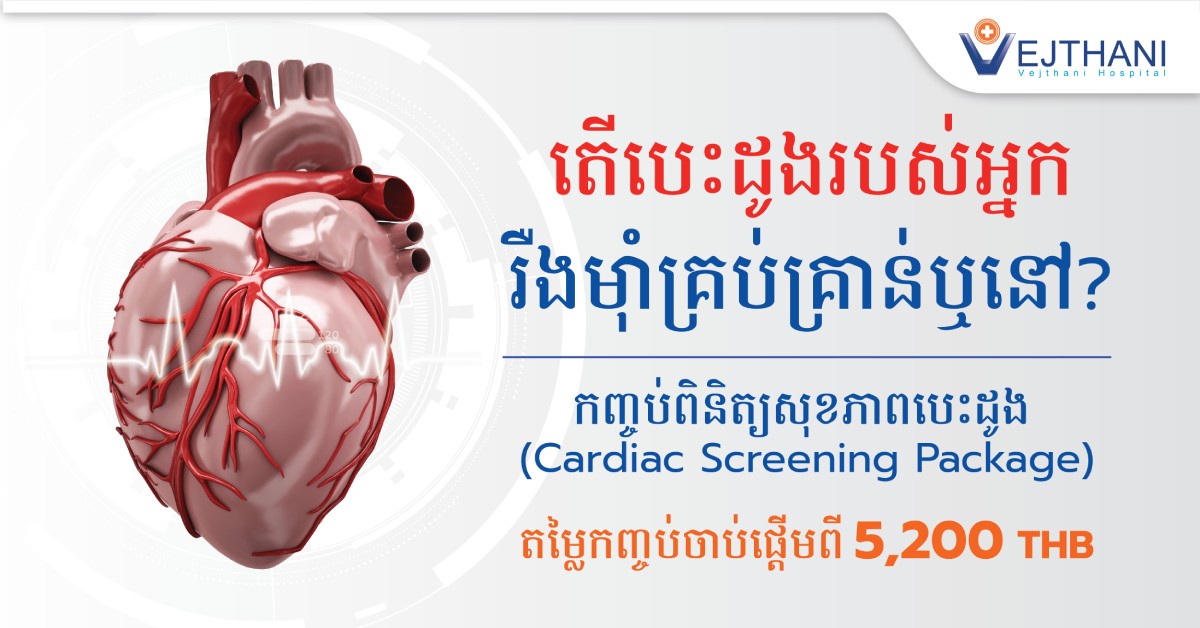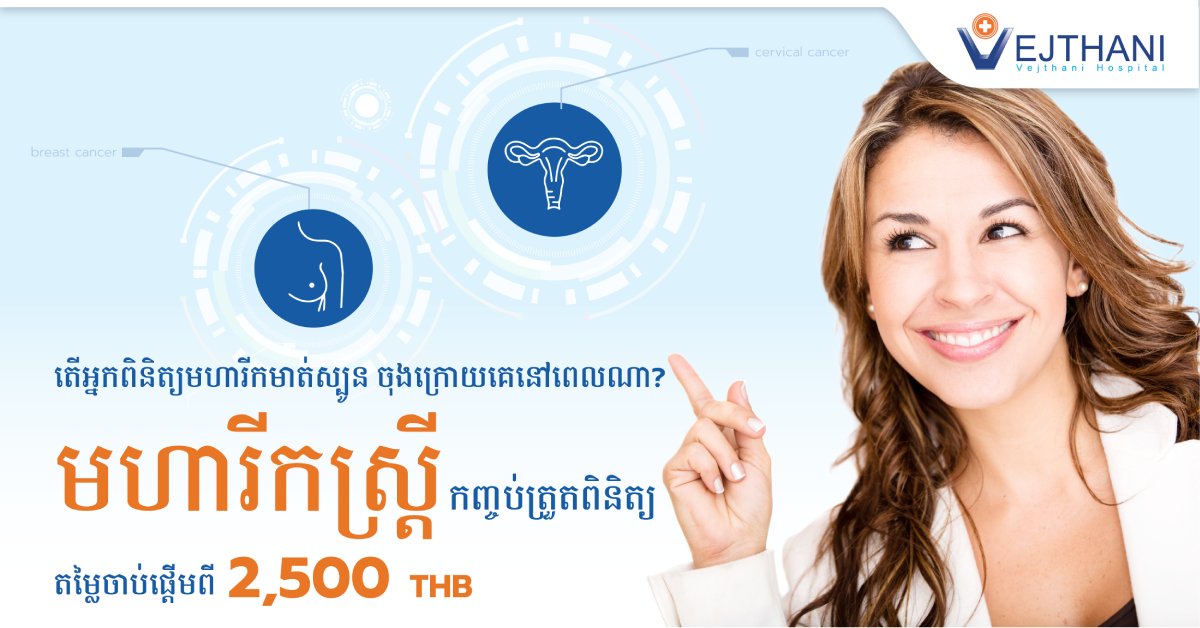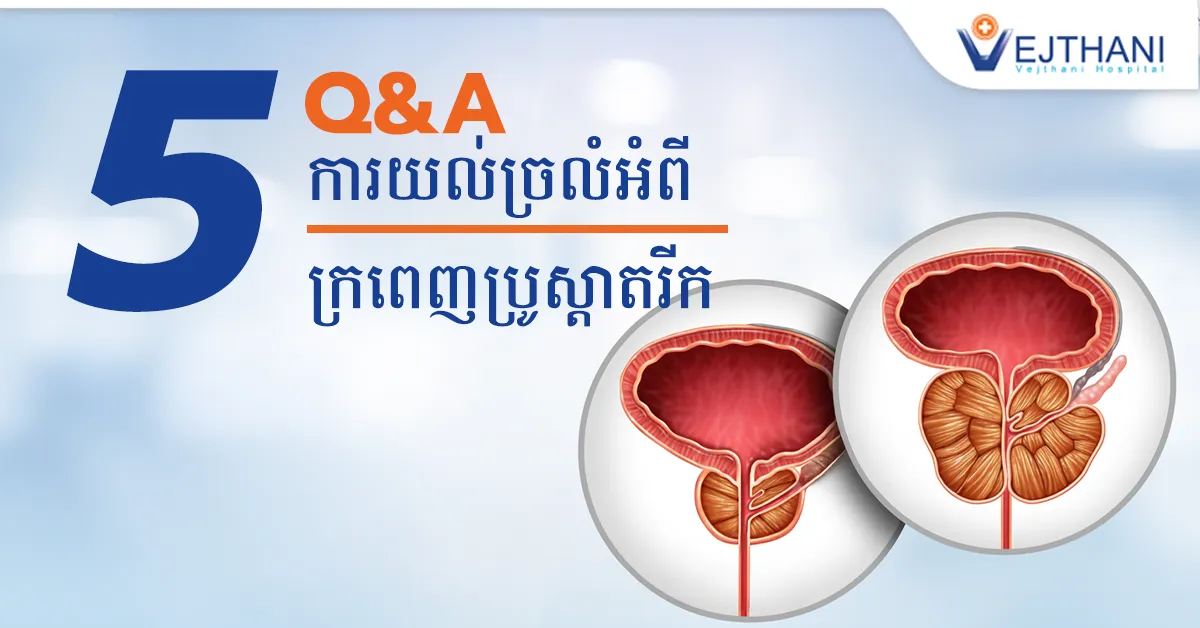
ជំងឺសន្ទះបេះដូងអ័រទីក (Aortic valve disease)
Diagnosis
The diagnosis for both types of aortic valve disease is the same. A physical examination, questions about the signs and symptoms, and a medical history are typically used to determine whether the patient have aortic valve disease.
If during the assessment the specialist hear heart murmur (whooshing sound of the heart), the patient will be referred to a cardiologist.
Aortic valve disease can be detected using a number of tests, including:
- Echocardiogram: is a type of cardiac ultrasound which examines the aortic valve and aorta more closely is possible and determines the severity of aortic valve.
- Electrocardiogram (ECG or EKG): this procedure captures the heart’s electrical activity. Sensors (electrodes) are applied to the chest, wrists, and legs, then it is attached to the monitor to show the heart rhythm.
- Chest X-ray: is a noninvasive radiographic imaging that shows the heart and lungs. The test results may be used by a medical professional to determine whether the heart is enlarged, which may indicate certain forms of aortic valve disease or heart failure.
- Cardiac magnetic resonance imaging (MRI): this procedure produces precise pictures of the heart using magnetic fields and radio wave and helps to assess the degree of aortic valve disease and the size of the aorta.
- Cardiac computerized tomography (CT) scan: produces precise detailed pictures of the heart and heart valves using a set of X-rays, which helps to examine the aorta more carefully and determine its size. Aortic valve calcium levels, aortic valve stenosis severity, and aorta size may all be assessed with a CT scan.
- Exercise tests or stress tests: In these tests, an ECG or echocardiogram is frequently performed while the patient walks on a treadmill or on a stationary bike. Exercise tests can assist determine how the heart responds to exercise and whether exercising causes symptoms of valve disease.
- Cardiac catheterization: This test involves inserting a thin, flexible tube (catheter) into a blood vessel, typically in the arm or groin area, and directing it to the heart. Cardiac catheterization can provide greater information regarding blood flow and heart function. Cardiac catheterization can be used for some heart treatments.
Staging
The healthcare professional might describe the disease stage once testing confirms a diagnosis of aortic or another heart valve disease. The best suitable course of action is determined by staging.
The four main stages of heart valve disease are as follows:
- Stage A: Patient is at risk for heart valve disease. Categorize as “at risk”
- Stage B: Mild or moderate valve disease. There are no signs of cardiac valve disease. Categorize as “progressive”.
- Stage C: Although there are no symptoms associated with heart valve disease, the condition is severe. Categorize as “asymptomatic severe”.
- Stage D: Heart valve disease show signs and symptoms that could is in severe condition. Categorize as “symptomatic severe”.
Treatment
Treatment for aortic valve disease includes observation, dietary changes, medication, surgery, and other procedures. Someone with this disease should have a consultation and treatment with a cardiologist. Treatment will depend on the severity, staging, symptoms, and the condition of the patient.
Medications
Medication may be prescribed by the specialist if the aortic valve disease is mild to moderate or asymptomatic. Regular checkup is advised for close monitoring of the disease. Medications are used to treat underlying symptoms of the disease such as controlling blood pressure, preventing irregular heartbeats, removing any excess fluid from the body that could strain the heart or prevent further complications.
Surgery
The aortic valve condition may require surgical intervention or catheterization for repair or replacement regardless of the symptoms. Aortic valve surgery is frequently performed during an open-heart surgery. However, for some cases, a catheter-based method or minimally invasive cardiac surgery, which requires smaller incisions than open heart surgery, may be used to replace the valve. Discussing with the specialist the risk and benefits of each procedure could help the patient choose the best option.
- Aortic valve repair: is usually done with open-heart surgery to reconstruct form and function of an aortic valve. However, minimal invasive surgery may also be an option. A less invasive technique called balloon valvuloplasty may be used in newborns and kids with aortic valve stenosis to open a stenotic heart valve. To enlarge the valve opening, a balloon is inflated, deflated, and then removed. Adults who are too severely ill for surgery or who are waiting for a valve replacement may also undergo this valve repair technique.
- Aortic valve replacement: An aortic valve replacement is usually performed through an open-heart valve surgery to remove damage valve and replace the heart valve with a new valve whether synthetic or animal tissue valve (biological valve). In some cases, the Ross procedure is used to treat aortic valve disease by remove the damaged aortic valve and replace with it with pulmonary valve.
- Transcatheter aortic valve replacement (TAVR): is a minimally invasive surgery, uses to replace a constricted aortic valve with a biological tissue valve. Compared to open heart surgery, TAVR will requires smaller incisions. For those who are more vulnerable to complications following cardiac valve surgery, TAVR may be a better option.
The specialist will discuss all of your treatment option with the risk and benefit of each type of valve and procedure to choose the appropriate treatment for you.
Contact Information
service@vejthani.com




















